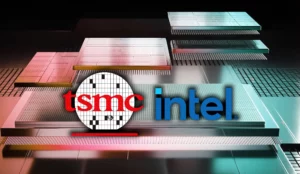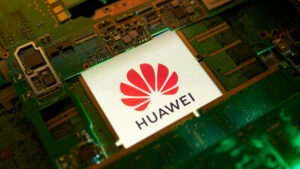Introduction
In a significant development for the semiconductor industry, Micron Technology has announced plans to build a new factory in Hiroshima Prefecture, Japan, dedicated to producing DRAM chips. The facility is expected to be operational by the end of 2027, with total investments estimated between 600 billion and 800 billion yen (approximately US$5.1 billion). This announcement comes despite initial plans to launch the factory in 2024 being delayed due to adverse market conditions.
Follow us on Linkedin for everything around Semiconductors & AI
Micron Japan: Investment and Construction Timeline for
According to Nikkan Kogyo Shimbun, the construction of the new factory is slated to commence in early 2026. The facility will be equipped with advanced extreme ultraviolet lithography (EUV) technology, crucial for manufacturing next-generation DRAM chips. These advanced chips are essential for powering innovations in generative AI, data centers, and autonomous driving technologies.
Micron Japan: Japanese Government Support
The Japanese government has pledged substantial financial support for Micron’s project. The government approved up to 192 billion yen (US$1.3 billion) in subsidies for Micron. This funding will help Micron introduce EUV equipment from ASML. ASML is a leading manufacturer of semiconductor equipment. The Ministry of Economy, Trade, and Industry (METI) highlighted the importance of this funding. It is part of Japan’s strategy to strengthen its semiconductor industry. The goal is to maintain technological competitiveness.
Read More: $445 Million in Damages: Jury Slaps Micron in Patent Trial Against Netlist – techovedas
Micron Commitment to Japan
Micron Technology’s decision to expand its operations in Japan underscores the company’s long-term commitment to the region. In 2013, Micron acquired Elpida Memory, a major Japanese DRAM manufacturer. Since then, Micron has integrated over 4,000 engineers and technicians into its workforce. The new factory in Hiroshima will bolster Micron’s presence in Japan. It will also enhance its capability to meet the growing demand for advanced semiconductor products.
Importance of EUV Technology
The incorporation of EUV technology is a significant step forward for Micron. EUV lithography is essential for producing smaller and more efficient chips, which are increasingly in demand for high-performance computing applications. This technology enables the creation of intricate chip designs with greater precision, supporting advancements in AI, big data analytics, and IoT devices.
Strategic Implications
The construction of the new DRAM factory in Hiroshima aligns with global trends in the semiconductor industry, where companies are investing heavily in advanced manufacturing technologies to stay competitive. By expanding its production capacity and integrating cutting-edge EUV technology, Micron is positioning itself to capture a larger share of the high-tech market.
Generative AI and Data Centers
The new DRAM chips produced at the Hiroshima facility will play a pivotal role in driving innovations in generative AI. These chips handle vast amounts of data at high speeds, making them ideal for AI applications that require real-time processing and analysis.Additionally, data centers, which form the backbone of the digital economy, will benefit from the increased efficiency and performance of these next-generation DRAM chips.
Autonomous Driving Technologies
The automotive industry is another key sector that will benefit from Micron’s new DRAM chips. Autonomous driving technologies rely on advanced semiconductors to process data from sensors and cameras, enabling real-time decision-making. The improved performance of DRAM chips will enhance the capabilities of self-driving cars, making them safer and more reliable.
Market Conditions and Future Prospects
Micron technology adjusted its initial plans to operationalize the new factory in 2024 due to poor market conditions. The semiconductor industry has faced various challenges, including supply chain disruptions and fluctuating demand. However, with the global demand for advanced technologies on the rise, Micron’s investment in the new factory positions the company to capitalize on future growth opportunities.
Economic Impact
Micron adjusted its initial plans to operationalize the new factory in 2024 due to poor market conditions. It will create numerous jobs, both during the construction phase and once the factory becomes operational. Additionally, it will stimulate the local economy by attracting related industries and suppliers to the region.
Read More: Upto 22% : Top 5 Semiconductor Equipment Makers Sales Surge in Q1 2024 – techovedas
Global Semiconductor Landscape
Micron’s expansion in Japan is part of a broader trend of semiconductor companies diversifying their manufacturing locations. By establishing production facilities in different regions, these companies aim to mitigate risks associated with geopolitical tensions and supply chain vulnerabilities. Japan, with its strong technological base and supportive government policies, is an attractive location for such investments.
Read More: what-is-a-data-center-and-why-its-considered-backbone-of-21st-century-digital-age/








